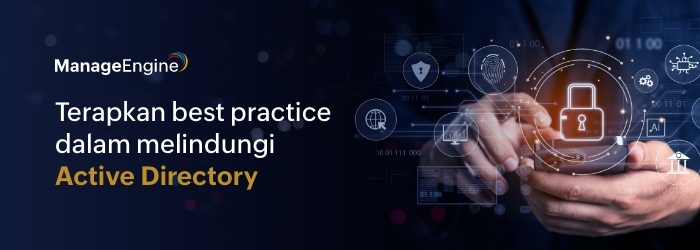Enterprise security has become a top priority with the recent spike in cyber attacks. With so many tasks piling up for IT administrators, many are left with a minimum amount of time to check on IT security. Unfortunately not all enterprises have a CIO that can help ensure their enterprise’s IT security is up to snuff.
When a data breach does happen, enterprises are left with two options: they can either report the breach, or they can keep the attack hidden to avoid hurting their brand’s image and reputation. To the public’s dismay, many enterprises, like Uber and Imgur, have decided to do the latter when faced with their own data breaches.
If you’re wondering how to strengthen your enterprise’s endpoint security, we’ve broken endpoint security down into five simple components to help you get started.
1. Patching network vulnerabilities
Most data breaches happen when a business application is left unpatched for quite a while. However, zero-day exploits can also impact network security by allowing attackers to perform remote code executions and breach into networks. Once hackers have found a way into a network, they can deploy malware, like ransomware, to compromise workstations, servers, etc. and more importantly, the corporate data stored on those devices.
With fast-paced cyber attacks in the mix, manually deploying patches isn’t going to cut it. IT administrators need a simpler way to resolve these vulnerabilities and avoid network breaches. The best way to resolve software vulnerabilities is to employ an automatic patch management tool. A patch management solution can help administrators automatically identify missing patches, download those patches from vendor sites, test new patches, and deploy them to the target machines after approval.
2. Endpoint security over USB devices
Not all threats emerge over the web—disgruntled employees can become a potential threat if they start misusing their USB devices. USB security threats may not even be intentional. Either way, USB device misuse can ultimately lead to a breach in an enterprise’s network. Managing USB devices and restricting their access can assist IT administrators in extra in-house device management and protecting their endpoints to the best of their abilities.
Employing USB security management solutions can help enterprises identify, monitor, restrict, and manage their USB drives with complete visibility over their network, reducing the possibility of any internal mishandling of devices.
3. Deploying configurations to enhance endpoint security
Most changes at the security level pop up instantly based on a change in network security policies, recent vulnerabilities that arise day in and day out, port exploitation, and more. IT administrators need a tool that will let them customize and deploy configurations based on their IT security needs. Configurations for firewalls, custom scripts, file and folder sharing, user management, group management, security alerts, and more all need to be deployed instantly to a targeted set of computers, with endpoint security as the ultimate goal.
4. Securing mobile devices
With employees going mobile these days, enterprises are obliged to secure employees’ mobile devices as well. Be it a tablet or smartphone, the corporate data on these devices has to stay protected from any possible data breaches or hacks.
When it comes to mobile device security, enterprises need a mobile device management (MDM) solution, which will help them secure the corporate data on their mobile devices by creating containers for managing corporate data and personal data separately. IT administrators must also be able to locate a device if it’s lost and delete its corporate data if the device can’t be located. Apart from these endpoint security features, IT admins must also be able to blacklist and whitelist apps in their network devices to avoid unnecessary IT management issues, spying, and data breaches caused by some unknown apps.
5. Protecting servers to ensure complete endpoint security
More than computers and mobile devices, it’s servers that play the biggest role in maintaining an enterprise’s productivity, stability, and security. Administrators can use proper backup techniques and security tools to prevent unwanted data breaches and downtime, keeping their servers running at all times. For example, having a secondary server to back up their primary server can help admins reduce downtime. Similarly, employing a decoy server before their firewall, similar to a honeypot, can help admins secure their main server and keep their data safe.
While paying close attention to these five aspects of endpoint security is a good place to start, please remember that all these are primary levels of security. With the GDPR coming into full force on May 25, 2018, enterprises will need to up their security measures to avoid paying a much higher price for data loss. To summarize, addressing these five areas is just their first step towards endpoint security.
Now if you’re wondering how to manage all your enterprise’s patches, USB devices, configurations, mobile devices, and servers in one shot, download our endpoint management solution Desktop Central now to get started.
Note: Don’t just take my word for it—try our free edition of Desktop Central, which is completely free for 25 computers and 25 mobile devices, and experience the benefits for yourself.


